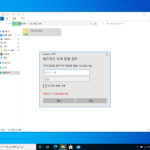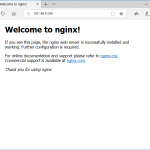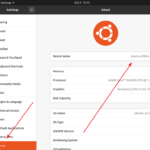리눅스 / 명령어 / rmdir / 빈 디렉토리 삭제하는 명령어
Created 2018-08-01
Last Modified 2024-01-05
rmdir
rmdir은 빈 디렉토리를 삭제하는 명령어이다.
Remove the DIRECTORY(ies), if they are empty.
사용법
rmdir directory
- a 디렉토리를 삭제한다.
# rmdir a
- 비어있다면 삭제를 하고, 그렇지 않다면 다음을 출력한다.
rmdir: failed to remove ‘a’: Directory not empty
rmdir --ignore-fail-on-non-empty directory
- 디렉토리가 비어있지 않아도 메시지를 출력하지 않는다.
rmdir -v directory
- 현재 디렉토리 안에 있는 모든 비어있는 디렉토리를 삭제한다. v 옵션을 넣으면 작업 결과를 출력한다.
# rmdir -v *
- 예를 들어 헌재 디렉토리에 a, b, c 디렉토리가 있고, a와 c는 빈 디렉토리, b는 비어있지 않은 디렉토리라면, 다음을 출력한다.
rmdir: removing directory, ‘a’ rmdir: removing directory, ‘b’ rmdir: failed to remove ‘b’: Directory not empty rmdir: removing directory, ‘c’
rmdir -p directory
- a/b/c를 삭제하고, a/b를 삭제하고, a를 삭제한다.
# rmdir -p a/b/c
- 아래와 같다.
# rmdir a/b/c a/b a
rmdir --help
- 도움말을 출력한다.
# rmdir --help
Usage: rmdir [OPTION]... DIRECTORY...
Remove the DIRECTORY(ies), if they are empty.
--ignore-fail-on-non-empty
ignore each failure that is solely because a directory
is non-empty
-p, --parents remove DIRECTORY and its ancestors; e.g., 'rmdir -p a/b/c' is
similar to 'rmdir a/b/c a/b a'
-v, --verbose output a diagnostic for every directory processed
--help display this help and exit
--version output version information and exit
GNU coreutils online help: <https://www.gnu.org/software/coreutils/>
Full documentation <https://www.gnu.org/software/coreutils/rmdir>
or available locally via: info '(coreutils) rmdir invocation'



